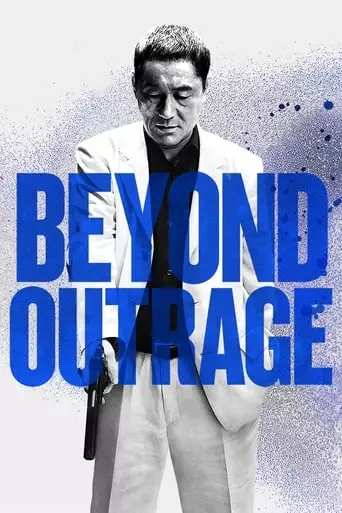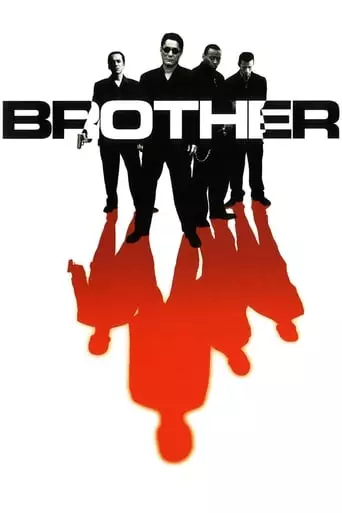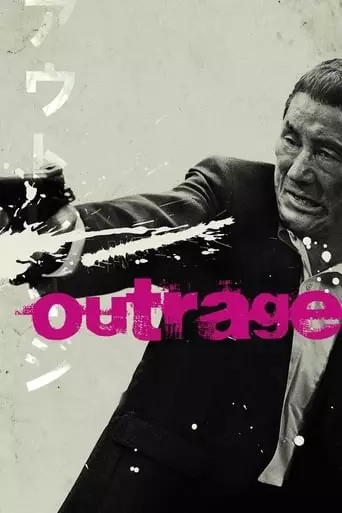As the police launch a full-scale crackdown on organized crime, it ignites a national yakuza struggle between the Sanno of the East and Hanabishi of the West. What started as […]

As the police launch a full-scale crackdown on organized crime, it ignites a national yakuza struggle between the Sanno of the East and Hanabishi of the West. What started as […]

Brash, loudmouthed and opportunistic, Kikujiro is the unlikely companion for Masao who is determined to see the mother he has never met. The two begin a series of adventures which […]

Murakawa, an aging Tokyo yakuza tiring of gangster life, is sent by his boss to Okinawa along with a few of his henchmen to help end a gang war, supposedly […]

A Japanese Yakuza gangster’s deadly existence in his homeland gets him exiled to Los Angeles, where he is taken in by his little brother and his brother’s gang.

Blind traveler Zatoichi is a master swordsman and a masseur with a fondness for gambling on dice games. When he arrives in a village torn apart by warring gangs, he […]

Detective Nishi is relieved from a stakeout to visit his sick wife in hospital. He is informed that she is terminally ill, and is advised to take her home. During […]

Dolls takes puppeteering as its overriding motif, which relates thematically to the action provided by the live characters. Chief among those tales is the story of Matsumoto and Sawako, a […]

When a tough yakuza gangster is betrayed by his bosses, it means all out war. Bodies pile up as he takes out everyone in his way to the top in […]
Takeshi Kitano: The Maverick of Japanese Cinema
Takeshi Kitano, also known as “Beat” Takeshi, is one of Japan’s most versatile and influential filmmakers. Born on January 18, 1947, in Tokyo, Kitano first gained fame as a comedian and television personality before transitioning to an acclaimed career as a director, actor, writer, and painter. His films, characterized by their unique blend of humor, violence, and poignancy, have earned him international recognition, with works like Sonatine (1993), Hana-bi (1997), and Zatoichi (2003) standing as testaments to his distinctive vision.
Early Life and Rise to Fame
Kitano grew up in a working-class neighborhood in Tokyo and initially studied engineering before dropping out to pursue a career in entertainment. He began as an elevator operator at a comedy club, eventually stepping into the spotlight as part of the manzai (stand-up comedy) duo “The Two Beats,” earning him the nickname “Beat” Takeshi. His quick wit and irreverent humor made him a television star in Japan, with roles ranging from game show host to variety show performer.
While his comedic persona dominated his early career, Kitano always harbored a deeper artistic ambition, which would later emerge in his filmmaking.
Directorial Debut: Violent Cop (1989)
Kitano’s directorial debut came somewhat by accident when he stepped in to direct Violent Cop after the original director dropped out. The film marked a significant departure from his comedic image, introducing audiences to a darker, more introspective side of his creativity:
Violent Cop follows a rogue police officer who uses brutal methods to take down criminals, blending unflinching violence with quiet, atmospheric moments.
Style: The film established many of Kitano’s trademarks: long takes, sudden bursts of violence, and an emphasis on character psychology.
Exploring Yakuza and Violence
Kitano’s early films often revolved around the yakuza (Japanese organized crime), portraying their lives with a mix of brutality, melancholy, and dark humor:
Sonatine (1993):
A contemplative take on the yakuza genre, Sonatine follows a weary gangster (played by Kitano himself) who contemplates his mortality during a retreat to Okinawa.
Themes: Explores ennui, loyalty, and the inevitability of violence, with moments of levity juxtaposed against existential despair.
Hana-bi (1997):
A masterpiece that won the Golden Lion at the Venice Film Festival, Hana-bi (translated as “Fireworks”) tells the story of a retired police officer dealing with personal tragedy and guilt.
Artistic Flourish: The film incorporates Kitano’s own paintings, adding a deeply personal layer to its narrative.
Impact: Cemented Kitano’s reputation as a major figure in world cinema.
Branching Out: Comedy and Experimental Works
While Kitano became synonymous with crime dramas, he also explored other genres and themes:
Getting Any? (1994):
A slapstick comedy about a man’s absurd quest to buy a car to attract women. This irreverent film showcases Kitano’s penchant for surreal humor.
Zatoichi (2003):
A reimagining of the iconic blind swordsman from Japanese cinema, blending traditional samurai action with modern visual techniques and a whimsical sensibility.
Success: Won awards at international film festivals and became one of Kitano’s most commercially successful films.
A Unique Cinematic Style
Kitano’s films are renowned for their unconventional approach:
Visual Economy:
Kitano often uses long static shots, minimal dialogue, and restrained performances to create tension and introspection.
This pared-down style contrasts with the explosive bursts of violence that punctuate his narratives.
Themes:
Recurring motifs in Kitano’s work include alienation, mortality, the search for meaning, and the interplay of humor and tragedy.
Duality:
Kitano’s comedic background often bleeds into his dramatic films, creating a distinctive tonal balance that makes his work both emotionally rich and unpredictably entertaining.
Personal and Professional Challenges
In 1994, Kitano suffered a near-fatal motorcycle accident that left one side of his face partially paralyzed. The incident marked a turning point in his career, leading to a deeper introspection in his films. His post-accident works often explore themes of fragility and the passage of time, reflecting his personal struggles and resilience.
Legacy and Influence
Takeshi Kitano is widely regarded as one of the most important figures in contemporary Japanese cinema. His influence extends beyond Japan, with directors such as Quentin Tarantino and Nicolas Winding Refn citing his work as an inspiration.
Kitano’s ability to straddle comedy, drama, and art-house sensibilities has made him a singular figure in film. His impact is felt not only through his films but also through his contributions as an actor, painter, and cultural icon.
Conclusion
Takeshi Kitano’s career is a testament to the power of reinvention and creative versatility. From his beginnings as a television comedian to his rise as a world-renowned filmmaker, Kitano has continuously pushed boundaries, creating films that are as poignant as they are entertaining. Whether depicting the lives of gangsters, ordinary people, or mythical swordsmen, Kitano’s work resonates with a universal humanity, cementing his legacy as a true maverick of cinema.